Getting to Know the Night Sky
Getting to know the night sky is fun, easy and can provide you with a wealth of knowledge in regard to navigation at night. This article focuses on the northern hemisphere only. It wont be long until I post on the southern hemisphere. Even memorizing the shapes of the constellations and then locating them in the night sky can be rewarding. If you're out in the wilderness, take a moment one night to look up at the sky and marvel at its wonder. Stars millions of light years away, gallaxies and nebulas - the night sky provides enough detail to keep the mind wandering for hours. This article covers most of the northern hemisphere's constellation and goes into detail about particular stars and their magnitudes, colors and degrees above the horizon line at peak. Other miscelaneous information, such as angular separation (distance) from star to star can be found as well. Bellow I show a simple method to count degrees in the sky and I am happy to take questions about the method if it is not understood.
![The Big Dipper in California]() A Shot I Took of the Big Dipper
A Shot I Took of the Big Dipper
It is important to note that all angles (measured in degrees (°)) of a star's relative position to the north or south horizon are taken from a latitude of 41° North, throughout the article. There is excellent chance you will not be viewing the night sky from this latitude. If this is the case, simply type into google the name of your location along with "latitude and longitude" and you will get an appropriate measurement. You can then further adjust the angles based on the difference between your latitude and 41°N latitude. If you are south of 41°N latitude you will adjust by subtracting that number of degrees from the star "heights" I've listed. Add the difference if you are north of 41°N latitude. There will be some error using this method but it gives you a good estimate and a close enough number for determining angles above horizons.
Also important to note. This is not a piece about astrology and constellation interpretations. Though I do touch upon a few astrology facts to make the article a bit more interesting, my intentions are to provide a piece that can educate the summitpost community about the constellations and objects in the night sky.
All constellation pictures were taken from a computer program I received with an Astronomy textbook in college called "The Sky." I drew in the lines of the constellations in Microsoft Paint to make them easier to see.
Circumpolar Constellations and stars:
Circumpolar constellations and stars are those that circle around the celestial pole/the North Star (Polaris) which never set or fall bellow the horizon line. They will always move in counter clockwise motions around Polaris and will always be visible at night provided no obstacles get in the way – such as trees, mountains, buildings or ambient light. There are five major constellations that travel round Polaris. They are:
![Twilight in Joshua Tree]() Twilight in Joshua Tree
Twilight in Joshua Tree
- Ursa Major – The Big Bear - This is the constellation that houses the ever famous Big Dipper!
- Ursa Minor – The Little Bear
- Cassiopeia – The Queen of Ethiopia
- Cepheus – The King of Ethiopia
- Draco – The Dragon
By familiarizing yourself with these five circumpolar constellations one will always have a guaranteed way of finding the North Star on a clear night. It is important to note that the North Star, despite common belief, is NOT the brightest star in the sky. Sirius is the brightest star in the sky and rises during the winter months. In fact, the North Star is only a 1.97 magnitude in brightness. The “lower” the number in magnitude, the brighter the star, planet, nebula, galaxy, etc. The moon, for example, is -26 in magnitude. Sirius is -1.44 in magnitude. Planets such as Mars, Saturn and Jupiter are bright as well and can often be confused as stars. So, this talk about magnitude may not mean much to someone who hasn’t taken entry-level astronomy but it is important to understand that the North Star can be difficult to find if you’re under the belief that it is a bright star. Perhaps the easiest way to find the North Star is to take the two front stars of the Big Dipper (Dubhe and Merak) and draw a line towards the North Star. This method is shown Bellow:
![Finding the North Star with the Big Dipper]() Finding Polaris with the Big Dipper
Finding Polaris with the Big Dipper
The angular separation between the Big Dipper (the Star Dubhe) and Polaris is 28°. However, if the Big Dipper happens to be in the lower sections of the celestial circle, perhaps behind some trees, there are other ways to find the North Star. First, try to find the other circumpolar constellations. Once you have done this, you’ll know the general direction of north and you can then use your fingers to count upwards in degrees (°) from a level horizon. This method is particularly useful in night navigation. By locating a circumpolar constellation such as Cassiopeia and then counting upwards in degrees, one will never fail to find the North Star. However, it is important to note that your location in the northern hemisphere will change the angle between the horizon line and the position of polaris in the sky. For instance, the amount of degrees between the horizon and Polaris will be dramatically different in Alaska than in Florida. *Bellow I've added Polaris' altitude in degrees from certain places in the United States. This should give you a good, general idea about the altitude of Polaris from your location.
Now, to count up in degrees towards Polaris, hold your arm out directly in front of you with your eyes looking down your arm as if you were holding a gun. Then make the following formation with your fingers...
![Determining Sky Angle with your Hand]() Determining Altitude in Degrees with your Hand
Determining Altitude in Degrees with your Hand
Now place your pinky (little) finger level with the horizon. The distance between your little finger and your index finger is approximately 10°. Thus, you can count up in degrees by using this method. If you know roughly how high Polaris is in the sky, this method will give you a general idea of where the North Star falls on that degree line in the sky.
*List of Cites in the United States and the postion (altitude) of Polaris in degrees (°) and measurments of North Latitude. The similarity between altitude and north latitude is only a coincidence so don't use north latitude for altitude measurments.
Albuquerque, NM - 35° - 35°N Latitude
Alexandria, VA - 39° - 38°N Latitude
Anaheim, CA - 34° - 33°N Latitude
Anchorage, AK - 61° - 61°N Latitude
Atlanta, GA - 34° - 33°N Latitude
Baltimore, MD - 39° - 39°N Latitude
Bangor, MA - 45° - 44°N Latitude
Birmingham, AL - 33° - 33°N Latitude
Boston, MA - 42° - 42°N Latitude
Boulder, CO - 40° - 40°N Latitude
Burtlington, VT - 44° - 44°N Latitude
Chicago, IL - 42° - 41°N Latitude
Dallas, TX - 33° - 32°N Latitude
Daytona Beach, FL - 29° - 29°N Latitude
Eugene, OR - 44° - 44°N Latitude
Great Fall, MO - 47° - 47°N Latitude
Kalamazoo, MI - 42° - 42°N Latitude
Las Vegas, NV - 36° - 36°N Latitude
Los Angeles, CA - 34° - 34°N Latitude
Milwaukee, WI - 43° - 43°N Latitude
New York, NY - 41° - 40°N Latitude
Omaha, NE - 41° - 41°N Latitude
San Francisco, CA - 38° - 37°N Latitude
Sioux Falls, SD - 38° - 43°N Latitude
The Constellations
Ursa Minor, seen bellow, is typically a difficult constellation to see in areas polluted by light. Commonly called the "Little Dipper," the constellation is home to the most famous star in the sky - the North Star (Polaris). Polaris, the star of the tip of the constellation (the tip of the handle of the Little Dipper), is the Alpha star at 1.97 magnitude and Kochab the Beta star at 2.06 in magnitude. It’s tough to do, but for more approximate measures of north, don’t confuse Polaris and Kochab which are very similar in magnitude (brightness) and relatively close together in the the sky. The angular separation of Polaris and Kochab is 16°.
![Ursa Minor]() Ursa Minor
Ursa Minor
Ursa Major, see bellow, is a rather large constellation but the most important part, and the most well known part of the constellation is the Big Dipper. The two brightest stars in the constellation are Alioth, the Alpha star at 1.76 magnitude and Dubhe, the Beta star at 1.81 magnitude. One intersting fact about the Big Dipper - If you look at the second star in from the tip of the handle, that is actually two stars! The brighter of the two is an unnamed star (SAO 23788) at 2.23 magnitude and the less bright star is named Alcor and is 3.99 in magnitude. Both are relatively young (in terms of time in the Universe) but incredilby hot, white stars.
![Ursa Major]() Ursa Major
Ursa Major
Cassiopeia, see bellow, can look like an “M” or a “W” depending on its relative position to Polaris. The less bright stars of the constellation, those which are not part of the "M" or "W", are difficult to see in both well lit areas and dark areas – they tend to blend with the rest of the sky/stars in darker areas. The Alpha star is Navi at 2.15 magnitude and the Beta star, Shedar, is slightly less bright at 2.24 magnitude. Navi is the middle star in both the "M" and the "W" and Shedar is the upper right star in the "M" or the lower left star in the "W", depending on its position. The second picture directly bellow highlights the "M/W" in yellow. Always remember that the "inside" of the "M/W" always points towards Polaris.
![The Cassiopiea Constellation]() Cassiopeia
Cassiopeia![The M/W in Cassiopea]() The "M/W" in Cassiopeia
The "M/W" in Cassiopeia
Cepheus, see bellow, is most describable as a “house” although thats not what it represents in astrology. There are five major stars in the constellation. Alderamin is the Alpha star at 2.45 magnitude and Errai is the Beta star at 3.21 magnitude. They are on opposites ends of the constellation. Cepheus is never difficult to locate as it lies directly in between Cassiopeia and Draco. The "top" of the house's roof, the star Errai, always points in the general direction of Polaris, but never directly at it and is roughly 11° away from Polaris. Another easy way to locate the North Star, if you can find Cepheus, is to draw a line through Alderamin and the star Alfirk towards Polaris. This method is show in the second picture directly bellow.
![The Cepheus Constellation]() Cepheus
Cepheus![Finding Polaris with Cepheus]() Finding Polaris with Cepheus
Finding Polaris with Cepheus
The Draco constellation, see bellow, is perhaps the less well known circumpolar constellation. Although, it is the largest of all the circumpolar constellations, its stars are often difficult to find in areas polutted by light and even in dark skies when the constellation blends in with other stars. However, it’s Alpha Star, Eltanin, is easily seen at 2.24 magnitude.
![The Draco Constellation]() Draco
Draco
Of Note - Generally, those who are at a position on the earth where the angle between the horizon and Polaris is less than 40° will see circumpolar constellations dip bellow the horizon line. However, they will never appear to rise in the east and set in the west and will still appear to circumnavigate Polaris. If you find this horizonal effect confusing, simply note that the circumpolar constellations at the lower latitudes are rising of the extreme northeast horizon and setting over the extreme northwest horizon - not the east and west horizons.
To further clarify any questions about why stars "rise" and "set," they do this simply because the earth rotates about its axis from west to east. Thus, the stars sweep the sky in an east to west manner. This is also why the east sees sunlight before the west - because the eastern portions of the Earth comes into sunlight before the western portions.
Non-Circumpolar Constellations and Stars/East-West Stars:
There are other stars and constellations that will help you better identify east, west and south as they rise over the eastern horizon and set in the west – like the sun. Of particular interest and perhaps the most famous constellation is the Orion constellation which rises only in the winter – perhaps you’ve heard of Orion’s Belt, well, that’s part of the Orion constellation. Orion is a large constellation and houses a nebula that is visible to the naked eye! Rigel is the Alpha star at .18 magnitude and is the lowest star on the right side of the constellation. Betelgeuse, pronounced "Bettle Juice," is the Beta star at .45 magnitude and lies in the upper left portion of the constellation. It is an old, dying star and is dark orange in color. The Great Orion Nebula, magnitude 4.00, is seen in Orion's sword bellow Orion's belt.
Orions Belt is perhaps more famous that the entire Orion constellation itself. The three stars, from left to right, are Alnitak, Alnilam and Mintaka. All three draw their names from anchient muslim texts, as do many other stars. At its peak, directly about south, Betelgeuse will be 53° above the horizon and Rigel will be roughly 39° above the horizon at a 41° latidude. The times the Orion constellation peaks directly above south will differ every day as the winter season progresses. However, if Orion appears to be directly upright and Betelgeuse and Rigel are at roughly 53° and 39°, you'll know you're looking/heading south.
![The Orion Constellation]() Orion
Orion
These are just a few of the major non-circumpolar constellations in the northern hemisphere. The non-circumpolar constellations are covered in more depth in the section bellow titled "The Seasons," as these constellations reach their peak in different months of the year.
- Orion - Aquila - Scorpius - Sagittarius - Lyra - Cygnus - Hercules
- Perseus - Auriga - Pegasus - Bootes - Leo - Corona Borealis
- Pegasus - Andromeda
Of Note - Generally, those who are at a position on the earth where the angle between the horizon and Polaris is greater than 35° are not likely to ever see Sagittarius or Scorpius as these constellations will never crest the south horizon.
The Seasonal Constellations:
Don’t expect to see the same stars out during winter that you see in summer. Those winter constellations, such as Orion, rise during daylight hours in the summer. Other constellation, such as Aquilla the Eagle, only rise during the night hours in the summer and never in winter. It is intersting to note that astrologists believe the Orion constellation to be shooting an arrow at Aquilla the Eagle. Orion rises in the winter months, the arrow in the springs months and the Aquilla constellation rises in the summer months. I've never quite "clicked" with astrology but its still interesting to think about how greatly it has influence cultures around the globe.
Seasonal Star Formations - Not Constellations
One formation of stars, created with three stars from three different constellations, appears only during the summer months and is known as the “summer triangle.” The stars Vega at magnitude .03 of the Lyra constellation, Altair at magnitude .76 of the Aquila constellation and Deneb at 1.25 magnitude of the Cygnus constellation, make up the formation. They are the three brightest stars in the sky during the summer months and are very easy to pick out. Although this formation wont give you a good general direction, it will be able to tell you which way is up! :) The angular separation between Altair and Vega is 34°, between Vega and Deneb is 23° and between Deneb and Altair is 38°. In the picture bellow, Altair is the lowest star in the triangle, Vega is the upper right star and Deneb the upper left.
![The Summer Triangle]() The Summer Triangle
The Summer Triangle
The Notable Five Summer Constellations:
- Cygnus - Lyra - Aquila - Sagittarius - Scorpius
Aquila, the "Eagle," is a notable summer constellation as its Alpha star Altair, as previously explained, is one of the three points of the summer triangle. Bellow is a picture of the Aquila although it should be mentioned that there are two other ways the constellation can be seen which utilizes other stars. However, this is the most basic. Included in the picture is the constellation Scutum, a simple formation of only two stars in the lower right portion of the Aquila constellation (the two stars farthest to the right). Some astronomers do not like to combine the two constellations. However, when Aquila is at its peak directly above south, the Alpha star Altair will be 56° above the horizon and the lowest star in the constellation, known as SAO 142931 (unnamed) will be 41° high.
![Aquilla Constellation]() Aquilla
Aquilla
Cygnus, the "Swan," is an easily recognizable constellation. It looks more like a cross that an swan, especially in areas with light pollution when it becomes harder to see the less bright stars the break away from the main cross. The Alpha star is Deneb and the Beta star is Sadr at 2.23 magnitude. At its peak above south, Deneb will be 93° above the south horizon (85° above the north horizon) and Sadr will be 88° high. This constellation is difficult to use for navigation as it is closer to the zenith (90°) than it is to a horizon.
![Cygnus Constellation]() Cygnus
Cygnus
Lyra is a smaller constellation when compared to others and can often be difficult to find in areas with light pollution. If it were not for its Alpha star Vega, this constellation would often be overlooked. Beyond it are no objects of interest such as galaxies, star clusters or nebulas which are common in many other constellations. At its peak above south Lyra, like Cygnus, is close to the zenith and its Alpha star Vega will be 87° above the south horizon.
![Lyra Constellation]() Lyra
Lyra
Sagittarius is a constellation that is typically better seen in the southern hemisphere, although it can be seen at the far southern portions of the northern hemisphere as well. It's Alpha star, Kaus Australis is 1.79 in magnitude and will be roughly 22° above the southern horizon at it's peak. If you live above the imaginary line that stretches from Las Vegas westward to the Pacific Ocean and eastward to Dallas then Birmingham and beyond, don't expect to see Sagittarius. Even in southern portions of the northern hemisphere, obstacles such as trees and mountains prevent this constallation from being seen. And yes...it does look like a teapot.
![Sagittarius Constellation]() Sagittarius
Sagittarius
The Scorpius constellation, like Sagittarius, is rare in the northern hemisphere. Don't count on seeing this constellation and using it as a navigation aid. Its brightest star, Antares, is a magnitude 1.06 and will be 30° above the south horizon at its peak directly above south. Still important to note - the times different constellations peak above south will change every night as the seasons progress.
![Scorpius Constellation]() Scorpius
Scorpius
The Notable Seven Winter Constellations:
- Orion - Canis Major - Canis Minor - Gemini - Auriga - Taurus - Perseus
Note - I've combined the Autumn and Winter constellations. Perseus is the only notable Autumn constellation.
Taurus "The Bull," just to the right of Orion, houses the Star Aldebaran. Aldebaran is a star commonly used for night-time navigation as it is incredibly easy to see and its orange color makes it more notable than other stars. Aldebaran has a magniutude of .87 and will be roughly 63° above the south horizon at its peak. The angular separation between Aldebaran and Betelgeuse (Orion's bright oragne star) is 21°.
![Taurus Constellation]() Taurus
Taurus
Auriga, an easily found constellation lies high in the sky above Orion and Taurus. Its Alpha star, Capella, at .08 magnitude is bright and easily notable. It has a dark oragne color and forms the top corner of the less famous "Winter Triangle" formation (Capella, Betelgeuse and Aldebaran). At its peak above the southern horizon it rises 85° in altitude. Next to Auriga is Gemini. Known as "The Twins," it is a less famous constellation and can be tough to see as it blends in well with the rest of the night sky. Simply note that it too lies above and slightly to the east of Orion and Taurus. Pollux, its Alpha star is 1.15 in magnitude and Castor, the Beta star is 1.58 magnitude. Pollux will be 73° above the southern horizon at its peak from 41°N latitude. Yet another "high in the sky" constellation that wont be very helpful for pointing you in any direction but up.
![Auriga Constellation]() Auriga
Auriga![Gemini Constellation]() Gemini
Gemini
Canis Major, a constellation that actually looks like what its name implies. Its a canine... Seen bellow and to the east of Orion, you wont have trouble identifying this one. And yes, that giant white star you see is Sirius, the brightest star in the sky! At -1.44 magnitude, Sirius is the Alpha star of Canis Major. It rises 31° in altitude above the southern horizon. You'll know you're heading south when you see this one at its peak. Don't confuse Sirius for a planet, however.
![Canis Major Constellation]() Canis Major
Canis Major
I have ommitted Canis Minor as it is a simple 2 star constellation. It lies above and to the east of Canis Major.
Perseus is a zenith constellation as it rises high in the sky directly above Taurus and to the west of Auriga. Its Alpha star, Mirfak, is 1.79 in magnitude and it rises 81° above the north horizon. Mirfak's angular distance (separation) from Taurus's Aldebaran star is 36° and slightly westbound. This fact will make the contellation easier to find.
![Perseus Constellation]() Perseus
Perseus
The Notable Two Autumn Constellations:
- Andromeda - Pegasus
Pegasus is the largest of all constellations and appears high in the autumn sky. It's most notable and easily recognizable feature is the giant "square" or "box" that appears in the sky. When the Andromeda constellation is included as part of Pegasus, it covers altuitudes of 48° above the southern horizon, stretching all the way to the skies zenith and beyond to 69° over the north horizon. That's 63° of the sky! The Andromeda constellation, often considered to be an extension of Pegasus are those stars in the upper left section of the picture seen bellow that reach away from the main "square" of Pegasus. Mirach and Almach are its two brightest stars at 2.06 and 2.10 in magnitude.
![Pegasus Constellation]() Pegasus and Andromeda
Pegasus and Andromeda
The Notable Four Spring Constellations:
- Leo - Hercules - Corona Borealis - Bootes
Leo is yet another constellation that looks like its name implies. Leo, "the Lion," is east of the Gemini Constellation and peaks in the early night in early spring. It's Alpha star, Regulus, is a common and well known star used for navigation. At 1.36 magnitude and whitish blue in color, it will rise to an altitude of 59° above the southern horizon at its peak above south.
![Leo Constellation]() Leo
Leo
Corona Borealis and Bootes are two constellations that lie right next to each other in the night sky. In the picture bellow, Bootes is the larger constellation and Corona Borealis is the smaller constellation to the lower left that is made up of only 4 stars. The brightest star of Corona Borealis is Alphecca at 2.22 magnitude. Its a white star that lies 69° above the southern horizon at its peak. The only other named star in the constellation is Nusakan at 3.66 magnitude. Bootes, on the other hand, is a bit larger and much easier to see. Although, if you find Bootes you'll be able to find Borealis. Arcturus, a famously bright star and the Alpha star of Bootes is -.05 in magnitude and lies 67° above the southern horizon line when at 41°N latitude. It is an old, dying out, orange star but it is still very bright.
![Corona Borealis and Bootees]() Bootes and Corona Borealis
Bootes and Corona Borealis
Hercules, a riser of late spring is another less well known constellation as it only has one "named" star. That star is Kornephoros. As the Alpha star, it is only 2.78 in magnitude, relatively dim, and bolsters a light orange color as it is a dying star. The Hercules constellation rises just before Lyra and if you can locate the star Vega, look westward and you'll find Hercules. It lies directly above the Serpins constellation and the Opheus constellation (both of which are not covered in this article)
![Hercules Constellation]() Hercules
Hercules
The main constellations of a particular season can been seen during other season but at different times of the night. The transitions between seasons are gradual but have a great affect on when and where you'll see a constellation in the sky. For example, the Leo constellation in mid winter (mid January) will be low in the east sky at, lets say, 10:00pm. However, by spring (mid March) at 10:00pm it will be high in the sky and will reach its peak above the southern horizon. This fact is true of all non-circumpolar objects and stars. Another example would be the Orion constellation. If Orion rises reaches its peak above south at 11:00pm in mid December it will be at peak above the southern horizon at 5:00pm in mid March. Oppositely, it will be at peak above south at 5:00 am in mid September. These two examples go to show how changes in the seasons, months, days - however you want to measure it - affect what you see in the sky.
The Moon
The moon cycles every 29.5 days, so roughly one month. The moon's shapes change due to the movements of the moon about the earth and the earth about the sun - their relative positions in space and time. However, the moon does not revolve around an axis as does the earth, so we will only ever see one side of the moon. Only a lucky few have seen the dark side of the moon...and yes, we're all thinking Floyd right now. Unlike stars, which generate their own light, the moon reflects sunlight, and that is why we are able to see it.
![Full Moon - Nov 25, 2007]() A Shot I took of the Full Moon in November, 2007.
A Shot I took of the Full Moon in November, 2007.
The beginning of the moon's cycle is the "New Moon" phase. This is when you can seen no moon in the sky at all. In this phase, the Moon is between the Earth and the Sun. In a counter-clockwise manner, the Moon orbits the Earth and slowly reveals itself. The phases of the moon are as follows:
1. New Moon 2. Waxing Crescent 3. First Quarter 4. Waxing Gibbous 5. Full Moon 6. Wanning Gibbous 7. Third Quarter 8. Wanning Crescent - and then back to New Moon.
Waxing means the Moon is "growing." Wanning means the Moon is getting smaller. Really, this means you see more or less. As it waxes you see more illumination. As it wanes you see less illumination. The Moon will always wax and wane from right to left. Bellow is a copy of the Moon Phases taken from physicsforums.com
![Moon Phase Diagram]() Moon Phases
Moon PhasesThe Milky Way
The Milky Way is not simply a celestial object, its a galaxy - the center of our galaxy! Our solar system is in the Milky Way Galaxy. The Sun, which is a star, is one of trillions of stars in the Milky Way galaxy. However, when we look up at the sky and see that long band of stars that stretch from horizon to horizon we are looking into the center of the galaxy. This band is made up of trillions of stars, most of which can't be seen. Gallaxies are a difficult concept to consider. Essentially, space is filled with galaxies and galaxies are filled with stars and planets - and many other objects.
Other Celestial Object: Galaxies, Nebulas, Star Clusters
More Details and Info coming soon
In this section I've listed just a few of the more interesting celestial objects that are visible to the naked eye. Of these objects are the Pleiades star cluster, Orion's Nebula and the Andromeda Galaxy. Pull out a pair of binoculars for an even better viewing!
The Pleiades Star Cluster is part of the Tuarus constellation.
![Pleiades Star Cluster]() Pleiades Star Cluster
Pleiades Star Cluster
The Orion Nebula is, obviously, part of the Orion constellation.
![Orion Nebula]() The Orion Nebula
The Orion NebulaMeteors - What is a Shooting Star?
A Shooting Star, scientifically known as a "Meteor" or "Meteoroid," is simply space debris or objects such as rocks falling through the Earth's atmosphere. Even tiny grains of material, similar to sand, can cause the large streaks across the sky as it enters the atmosphere. Effectively, the debris and other matter are burning and disintigrating as they head towards the ground and break through the upper atmosphere - this is why the Space Shuttle has a heat shield for when it re-enters Earth, to prevent it from simply breaking up and disintigrating. Thus, the streak you see in the sky aren't really "shooting stars," they're bits and pieces of matter from space breaking up and leaving a trail of "dust" as they enter the atmosphere. On average, one can see four to five meteors in an hour. However, debris is falling towards Earth every minute!
The larger objects that fall through the atmosphere which don't wholly disintegrate and make it to the ground are called meteorites.


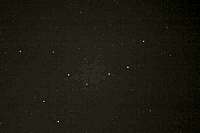




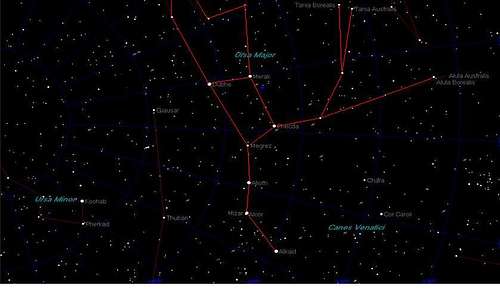
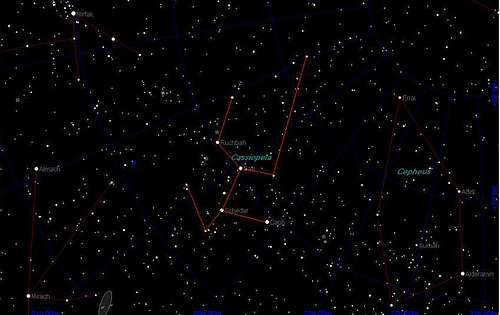

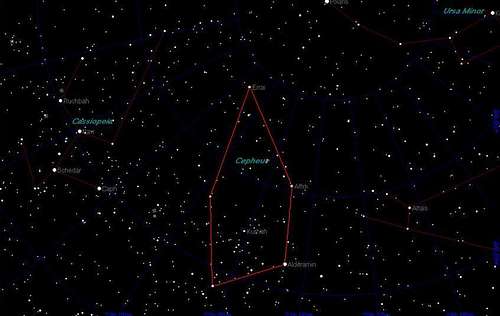
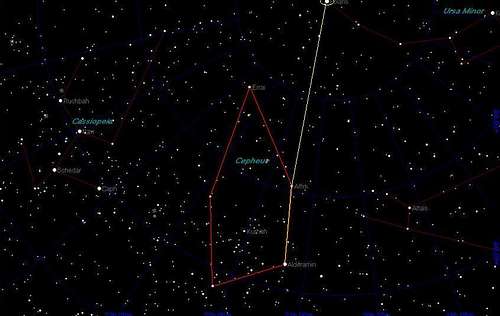


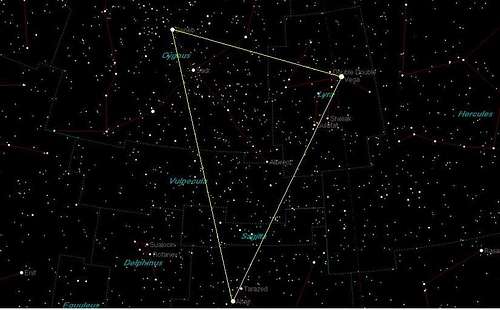
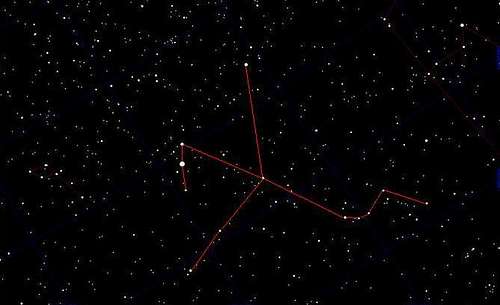
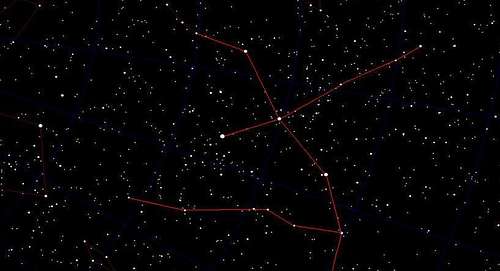



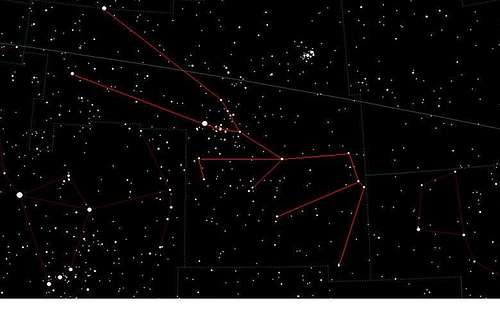
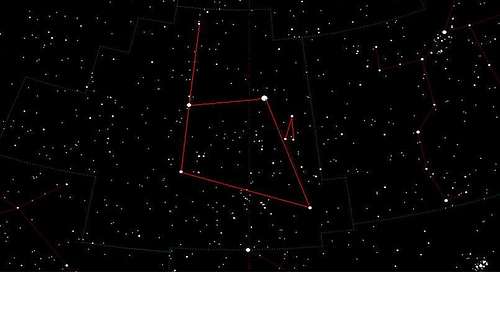

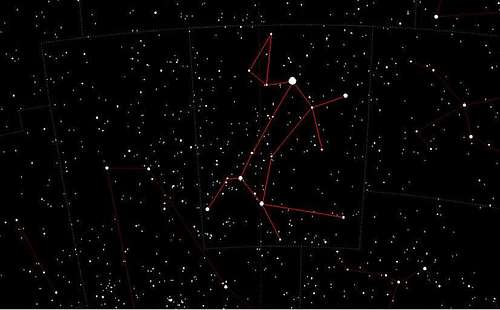


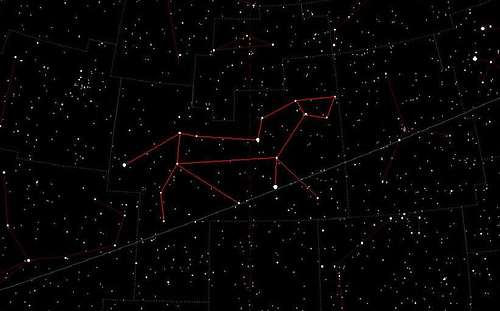
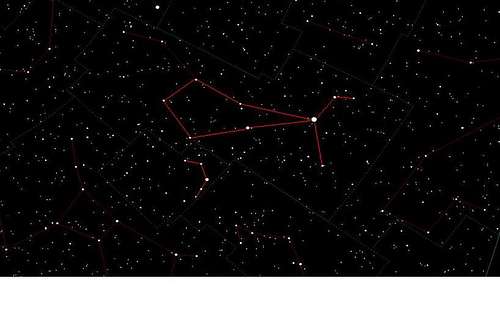
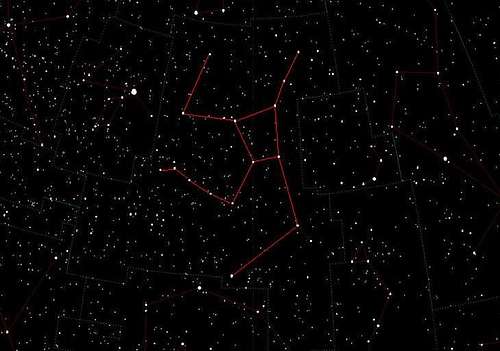
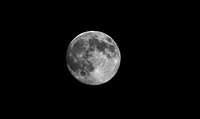










Comments
Post a Comment